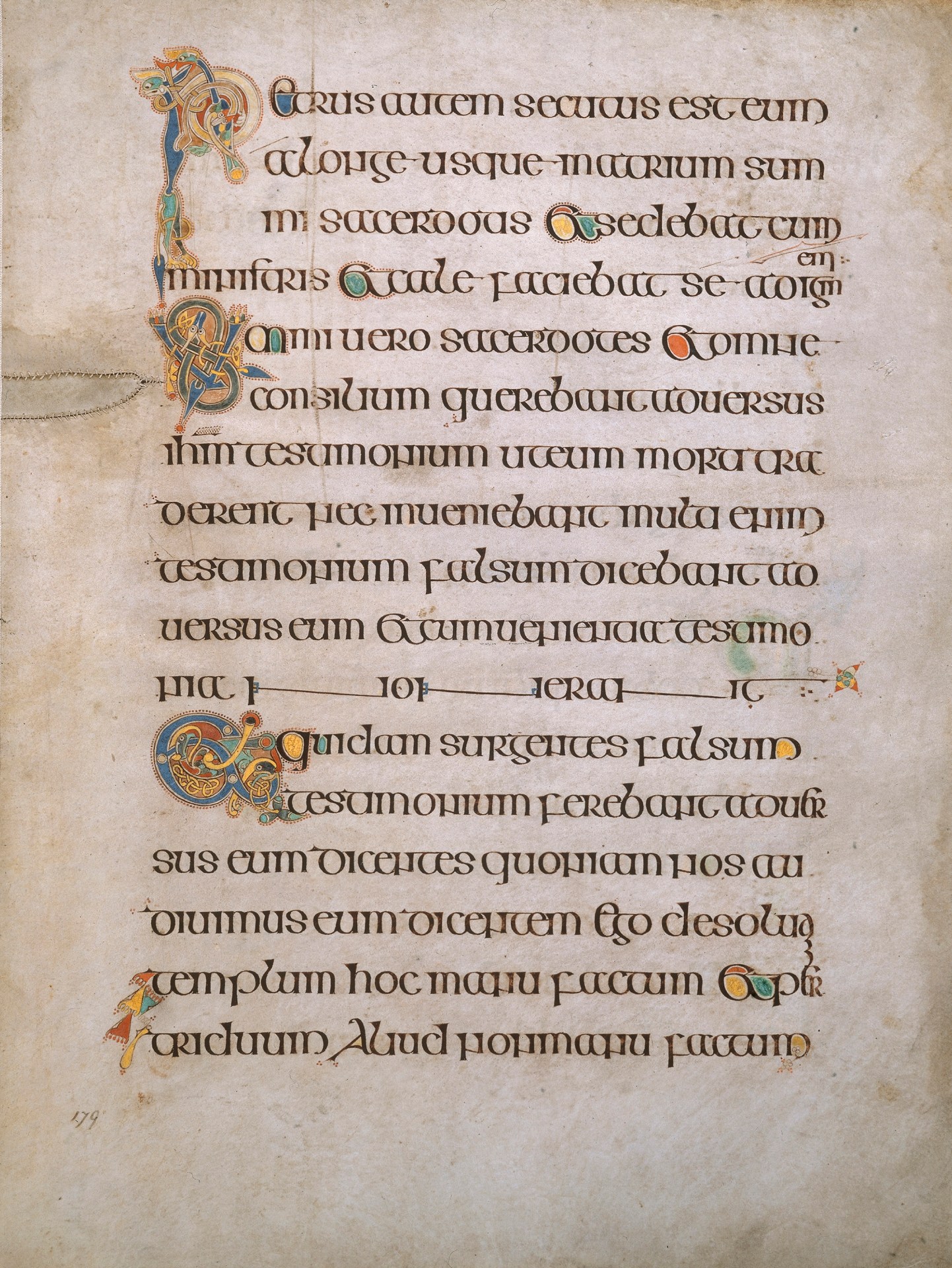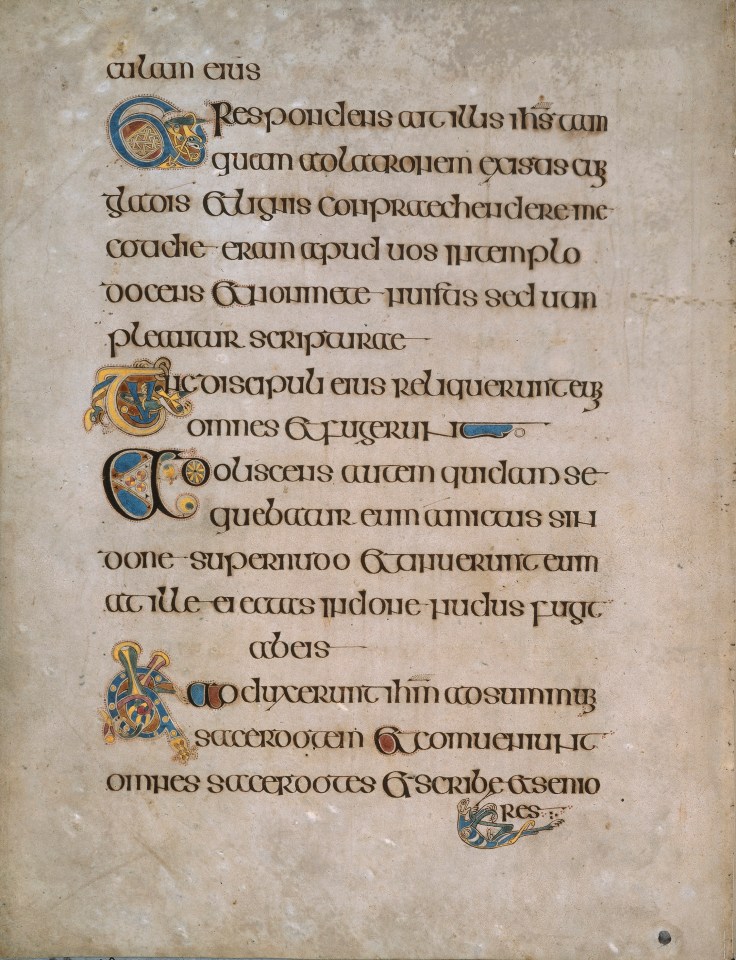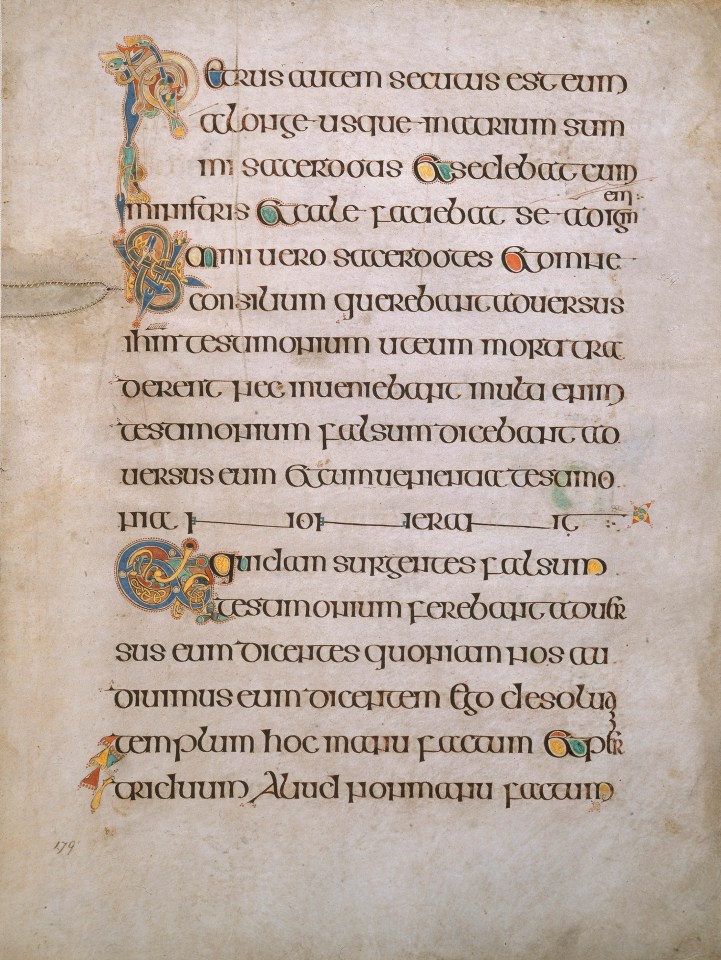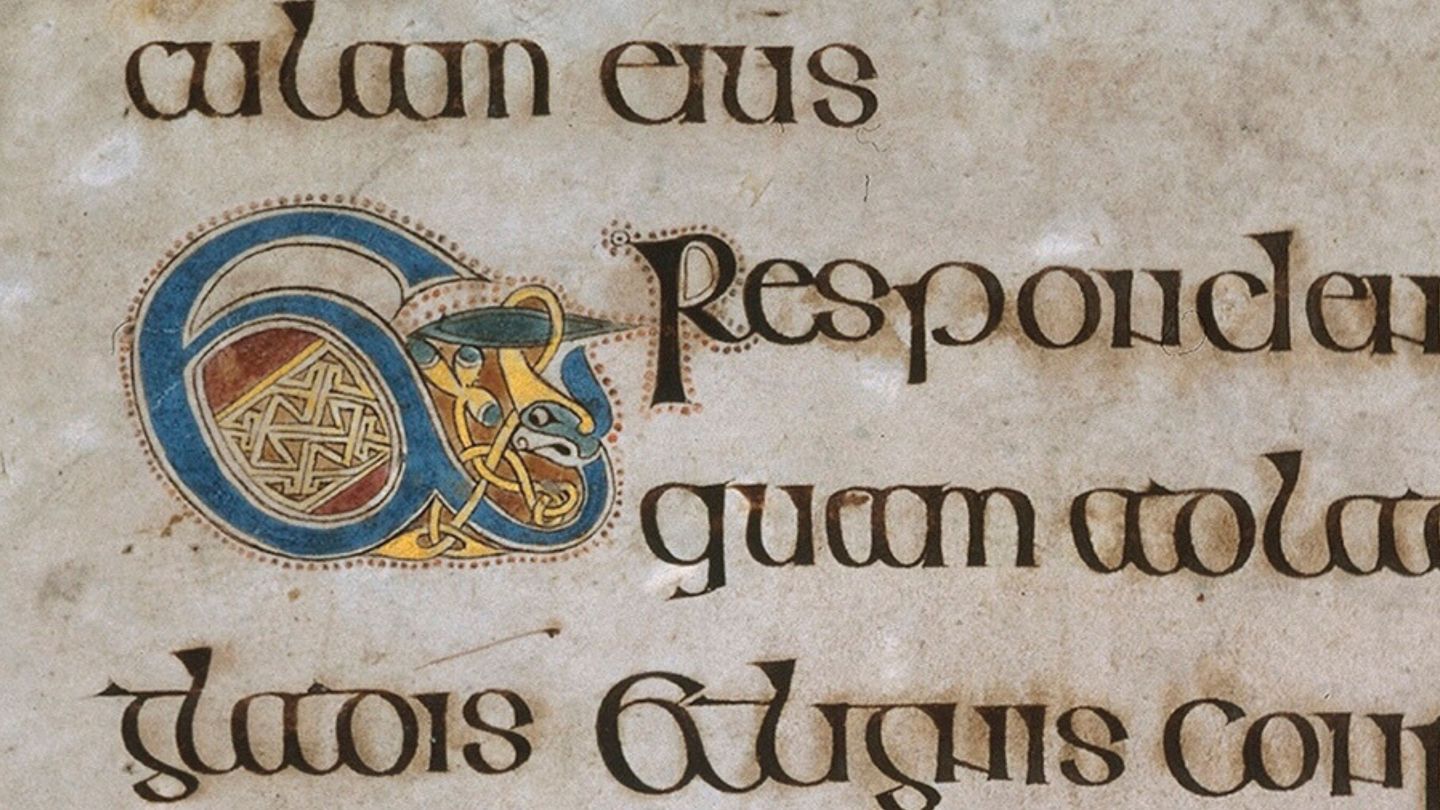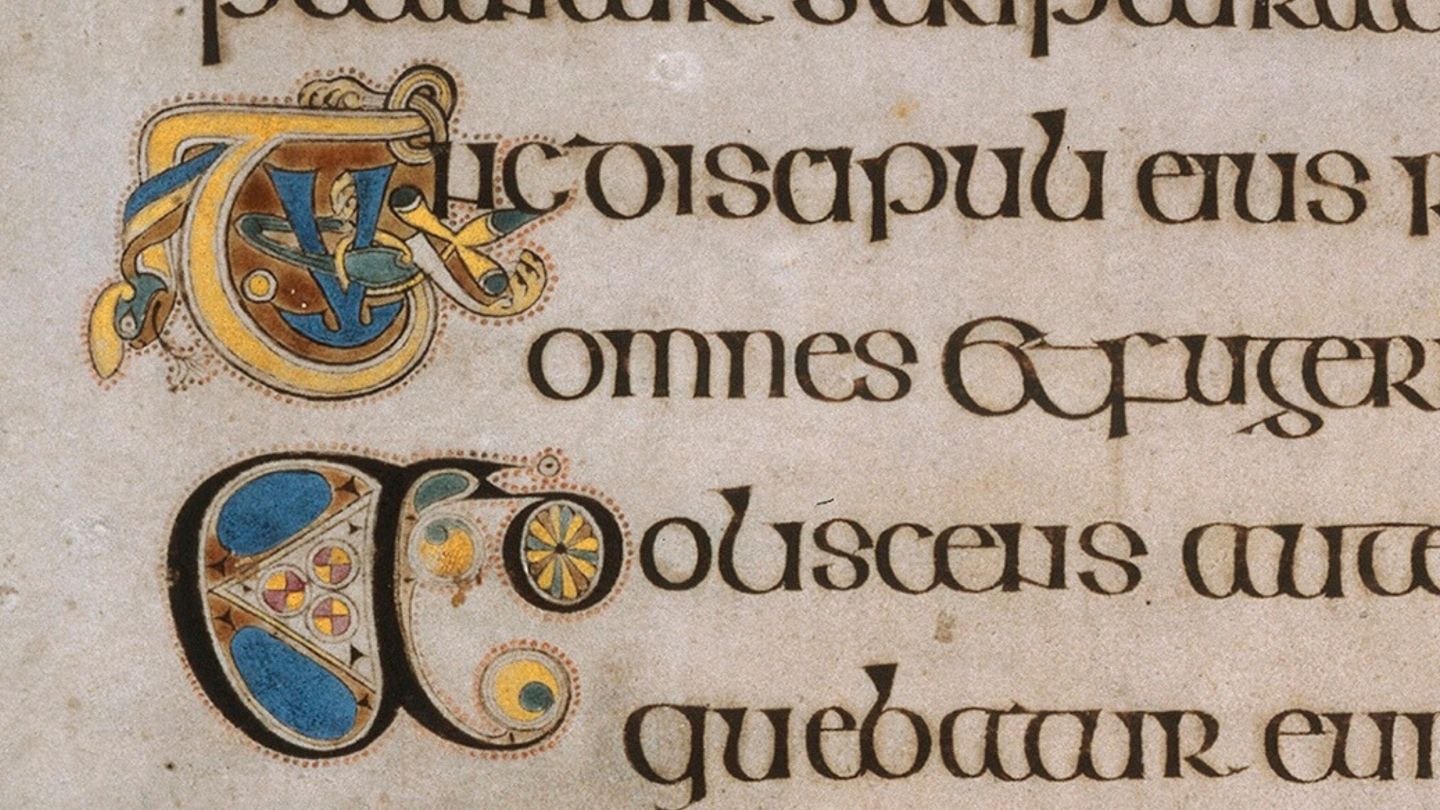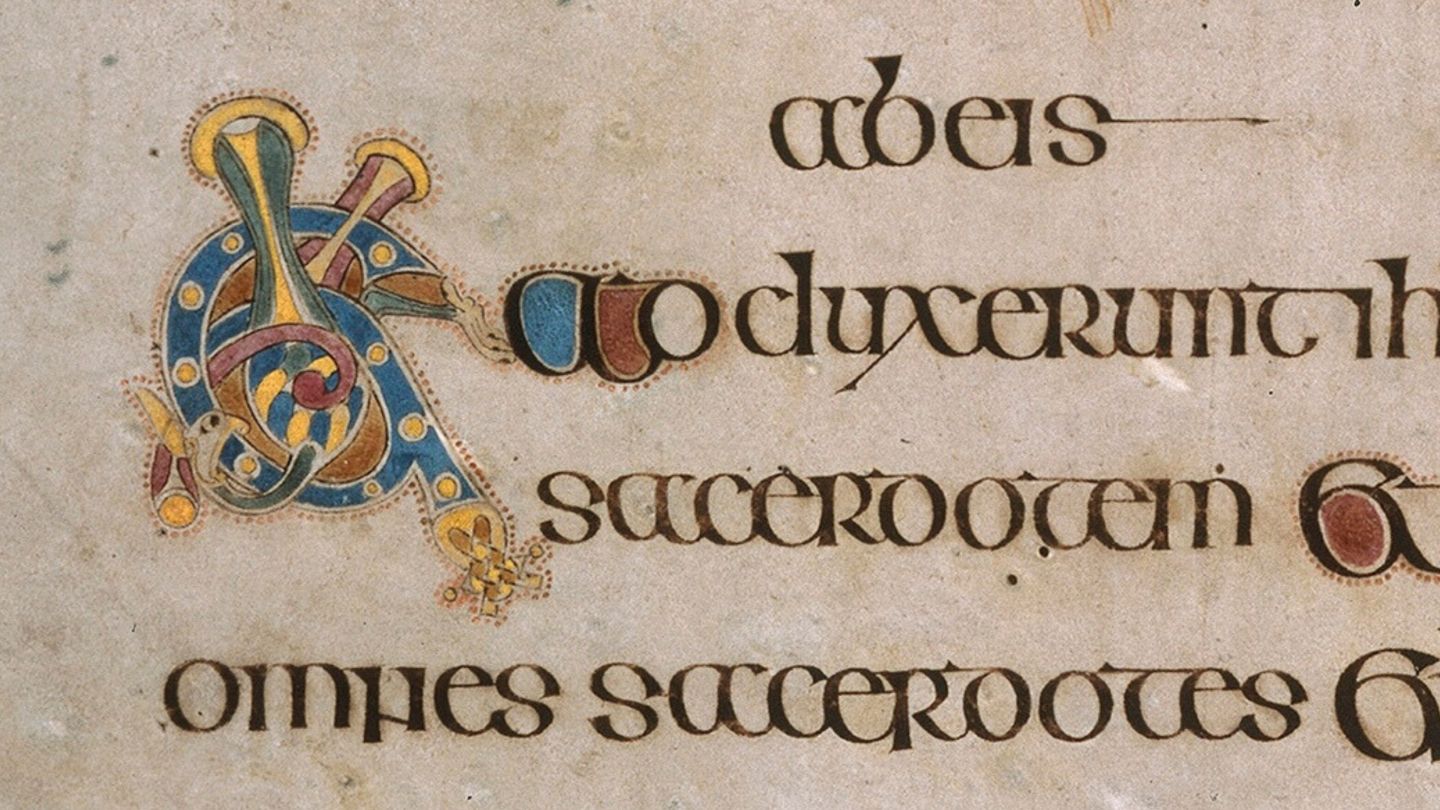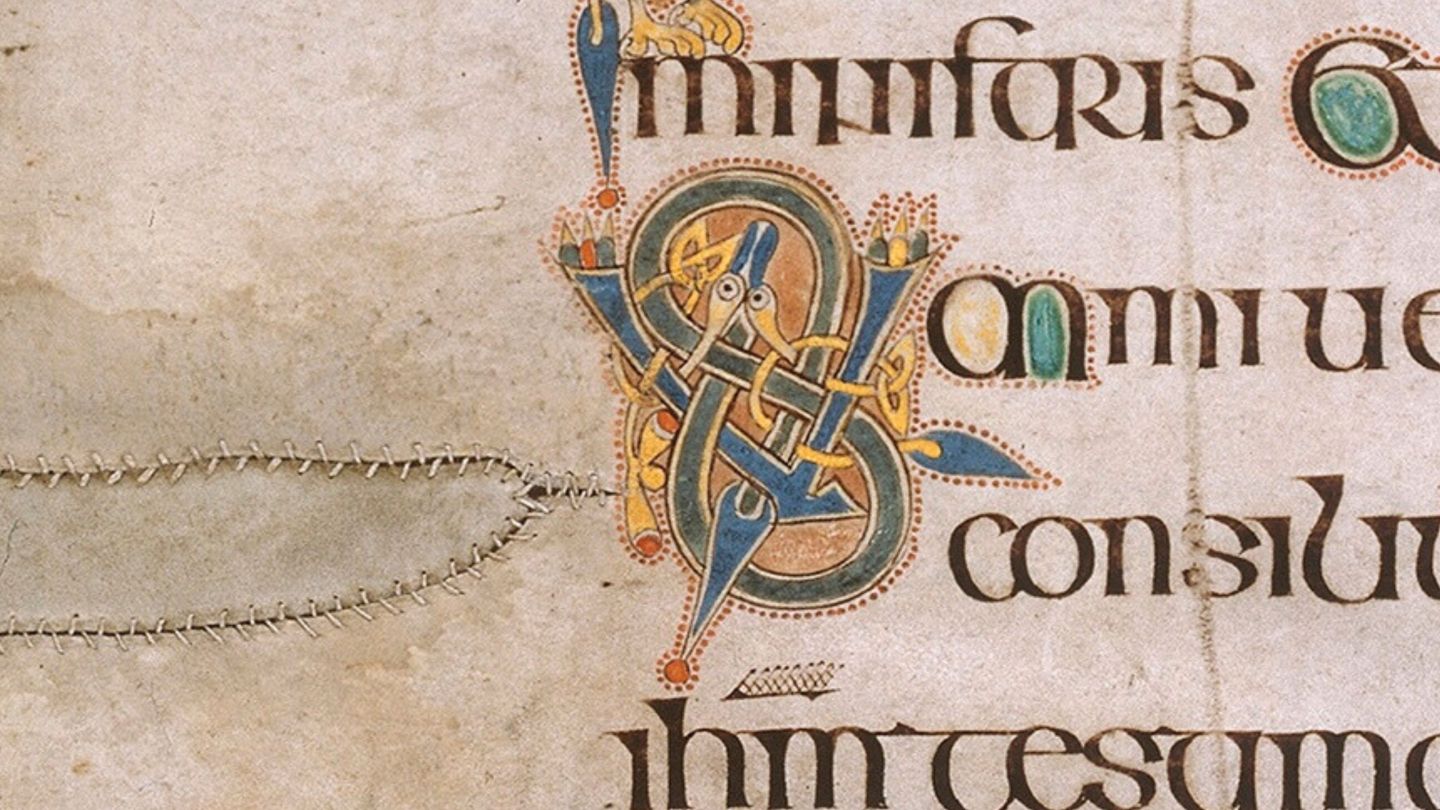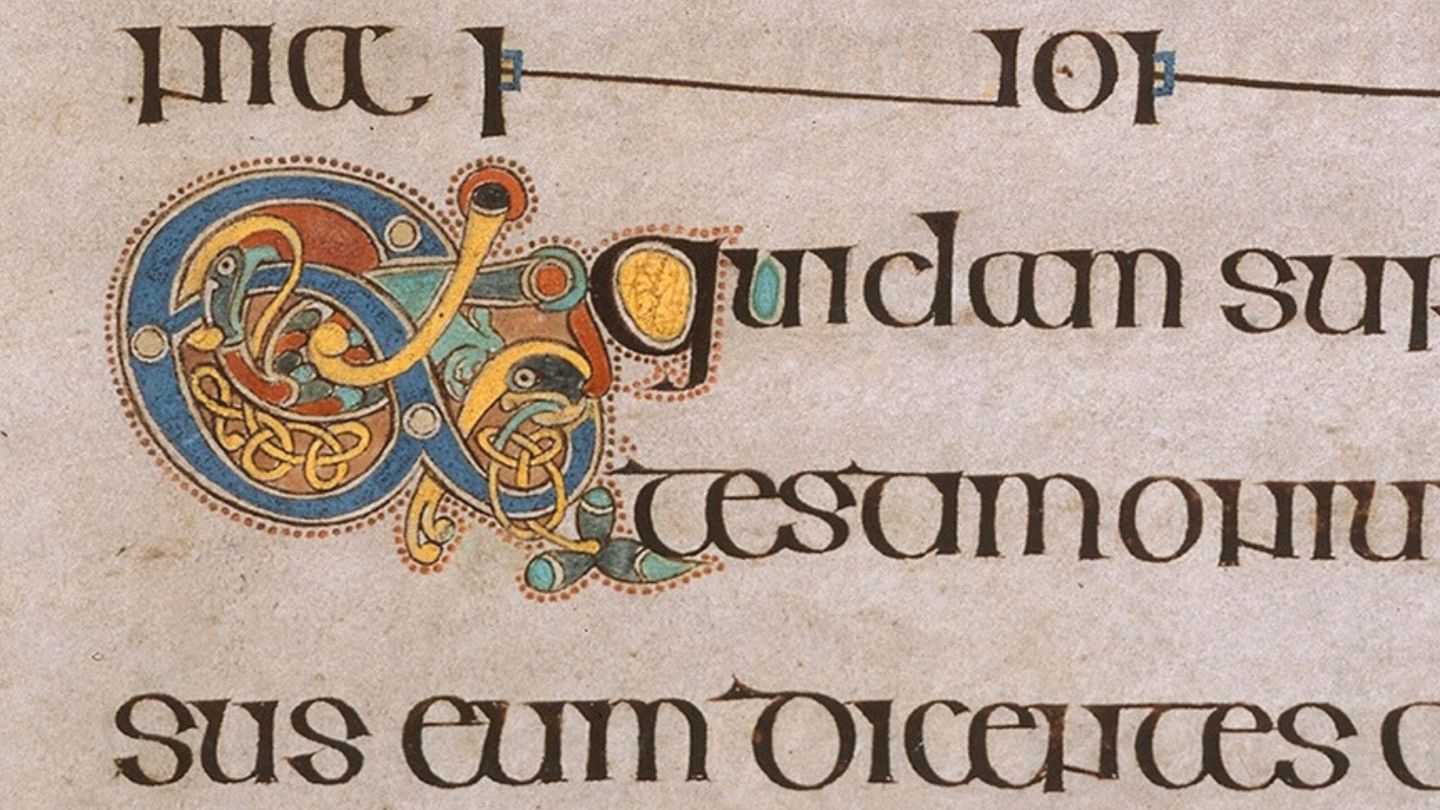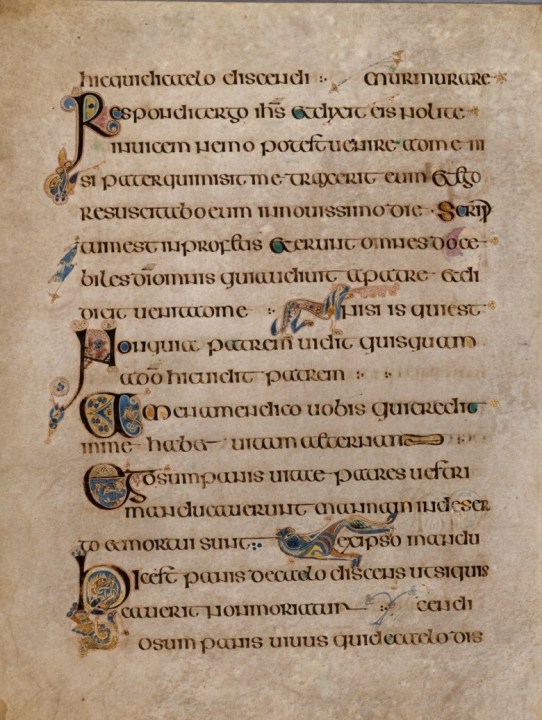
There are subtle symbols of Christ and his resurrection on folio 179r. Dual symbolism was attached to the snake or serpent. Responsible for the Fall of Man due to its role in Man’s loss of innocence in the Garden of Eden (Genesis 3.1-5) and so synonymous with the Devil – it was also a common symbol of Christ’s Resurrection. The snake is a major decorative element throughout the Book of Kells: the decorated initial P on the first line has a snake, a quadruped and a peacock intertwined to form the P of Petrus (‘Peter’). The sinuous form of the snake is perfectly adapted for the initial letter S, such as the second decorated initial, Summi (‘the highest’) on the fifth line.
The stitching on this folio indicates a careful repair to the parchment, which was an expensive commodity and a valuable resource. Weaknesses in the skin often led to ruptures during the preparation of the calfskin to create vellum, resulting in holes of varying sizes. Medieval scribes and artists creatively adapted to these imperfections. They either wrote around holes or turned them into opportunities for playful decoration. Parchment-makers sometimes stitched perforations shut with heavy thread before final tensioning to prevent further expansion. These repairs became part of the manuscript’s visual narrative and a visible testament to the skill of its creators.
